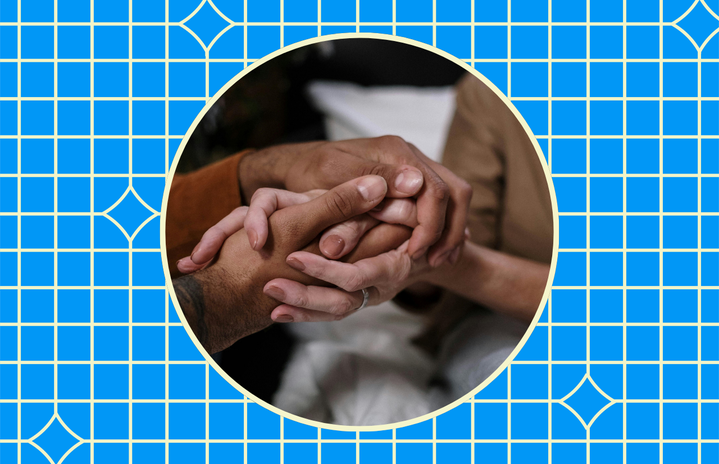By now you must know that every month is a celebration, observance, or spotlight on various communities and identities. And with May just around the corner, that means we’re up for a triple-header. Along with AANHPI (Asian American, Native Hawaiian, and Pacific Islander) Heritage Month and Jewish American Heritage Month, May is also Mental Health Awareness Month.
While we’ve made some pretty great social strides normalizing the fact that mental health is, in fact, health, dedicating some time to further awareness of different types of mental health struggles is important. As someone with Generalized Anxiety Disorder, I know better than most that acknowledging mental health is one thing, and actually learning how to be proactive about it is another.
My school principal used to say that nobody should struggle alone. Sometimes, the best thing you can do for someone is randomly reaching out and letting them know you were thinking about them. Mental Health Awareness Month is a great opportunity to grow your knowledge and be intentional in your support.
Like other forms of health, there are a lot of factors, and some people are more vulnerable than others. So, let’s get into everything you need to know to prepare for Mental Health Awareness Month, including the weekly themes. Below you’ll find your guide to the structure of the month, along with some basic tips for how to acknowledge this time.
Week 1 (May 1-4): Older Adults
The shortest week of May is no less important as we kick off the month focusing on older adults. Of course, these are some of the people who might be most entrenched in older ideas and stigmas around mental health, so the easiest thing we can do is continue to push for more open conversation around mental health.
Consider reaching out to the adults you care about in your life and supporting them in whatever way they need—whether just listening to them rant, helping fix electronics, or pushing for consideration of their mental health.
Week 2 (May 5-11): Children and Teens
A lot of mental health concerns can start to pop up around the teens and early twenties, and it can be especially confusing when there’s already so much change happening. For our younger community (I’m almost not a teenager anymore, but let’s be honest, sometimes I still feel like a kid), family and community support is critical.
Again, conversations about mental health and its inconsistencies are the most basic way to start helping out other people. Additionally, consider doing some research into the different ways mental health issues can manifest in younger people, as early diagnosis (or even conversations) can be vital in maintaining health through adolescence.
Week 3 (May 12-18): Pregnant and Postpartum People
Obviously, a lot changes in the body during and post pregnancy — there’s the growth of an entirely new person going on. Mental health issues related to or co-occurring with pregnancy, however, can sometimes be exceptionally difficult to address, especially because of the pressures on parents and expectant parents.
Because mental health is just as important as (and related to) physical health, mental health issues can often lead to or exacerbate physical health complications involved with pregnancy. I recommend doing research on conditions like postpartum depression, and if you have any pregnant or postpartum people in your life, think about ways to support and reassure them.
Week 4 (May 19-25): Racial and Ethnic Minority Groups
There’s a lot to consider in the fourth week of May. Racial and ethnic minority groups often have different views on mental health due to culture — I know that among many communities of color, mental health can be an especially complicated topic. That’s before one considers the many social factors that can threaten minority mental health and block access to treatment.
If you’re engaging in conversations about mental health with racial and/or ethnic minority groups, keep in mind the different cultural contexts at play. This is also a great moment to consider ways to be civically engaged and push for better access to mental health resources across the board.
Week 5 (May 26-31): LGBTQIA+ Communities
As the final week of May leads up to the celebration of Pride Month in June, Mental Health Awareness Month turns its focus to LGBTQIA+ people and their unique struggles. Queer people, especially queer youth, are often at a much higher risk for conditions such as anxiety and depression, often due to unsafe school or home environments.
There are many organizations working to combat these issues, such as the Trevor Project, but nonprofits are only one way of engaging. Make sure to continue to support any queer people in your life and be intentional in your efforts to create inclusive spaces.
Of course, building your awareness of mental health should never be contained to the 31 days of May! Continue to learn about different conditions, whether via articles or the many creators who share what it’s like to live with certain diagnoses. Keep in mind that mental health is a journey, not a destination, and everyone has ups and downs, steps forward and back in their progress. We don’t need to do it alone. As the song goes, sometimes “we all need somebody to lean on.”



